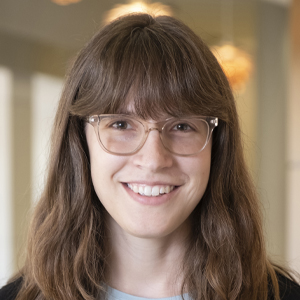
‘A challenge to learn’
The first full sequence of the angelfish genome recently was published, and there are a few unusual things about this paper.
First, it has a single author. That’s not unheard of in science, but it’s not common.
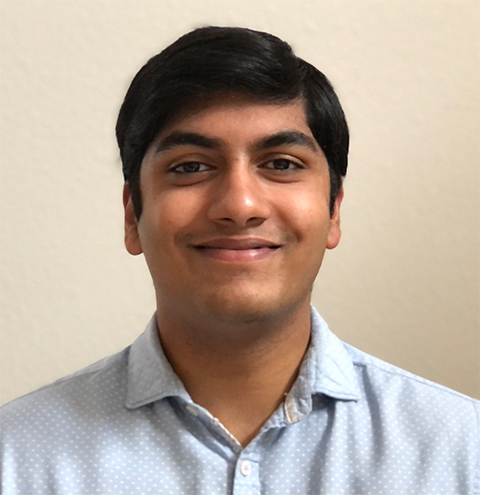
Second, the author has two unusual affiliations: BioCurious and BASIS. Neither is obviously a university or company. It turns out that BioCurious is a community lab space in Santa Clara, California. And BASIS, short for BASIS Independent Silicon Valley, is a private middle and high school in San Jose.
So was this sequencing done independently by a high school student?
It was. Indeever Madireddy, a 17-year-old high school senior, is the paper’s author.
Indeever’s interest in biology began when he was in middle school. He credits his science- and tech-focused school with giving him early exposure to biology, chemistry and physics. By 10th grade, he knew he wanted to try bench research. “I’m really lucky to be in the bay area with a lot of opportunities,” he said.
The lab
One of those opportunities was BioCurious, a nearby community lab. “BioCurious is for DIY biologists or entrepreneurs,” Indeever said. “If you want to start a company or just do independent experiments, you can pay a monthly fee and use the lab.”
BioCurious is run 100% by volunteers, and its equipment is hand-me-downs donated by industry. Lab users must take a safety course and only are allowed to do BSL-1 research, the lowest biological safety risk level. Because Indeever is under 18, his parents — who are not scientists but are responsible adults — had to be with him. Other than that, the people in the lab all work independently.
“It’s up to you to do research you want to do,” Indeever said.
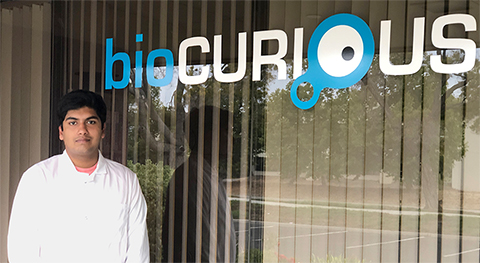
Johan Sosa is an information technology expert by day who also does research at BioCurious. He said he noticed several things about Indeever: He was full of ideas, not afraid to fail, willing to put the work in and had a scientific way of planning.
“Indeever wanted to do (his experiments) in such a way that if certain assumptions didn’t work out he’d still have something workable,” Sosa said. “There’s also this thing from the startup culture that he has: ‘fail fast!’ And when he fails, he has the perseverance to learn from the failure, figure out why the experiment didn’t work, figure out if there’s something fundamentally wrong or if he can find a way around it.”
Sosa saw Indeever work on several projects in the lab over the last few years and saw many other hobby scientists and students come and go in that time.
“One difference that I see with Indeever is that he sticks around,” he said. “A lot of things in bio don’t work usually, a protocol you find in a paper doesn’t actually work, it gets frustrating. I noticed he was persistent; he was not afraid to ask anyone around to find out what could have gone wrong.”
Indeever was “willing to reach out to get resources to help,” Sosa said. “Just super passionate about it.”
The fish
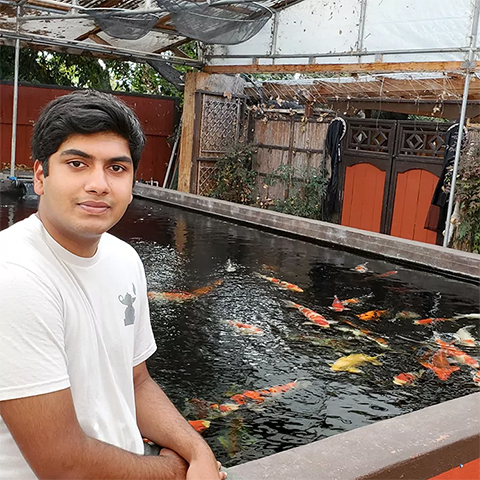
Indeever isn’t just in the lab thinking of experiments all day. He also keeps fish. He has more than a hundred fish at home, fresh and saltwater, in indoor and outdoor tanks, and cares for them all. In fact, the angelfish that ended up donating its DNA for sequencing was one he raised by hand.
About two years ago, Indeever had a pair of freshwater angelfish, or Pterophyllum scalare, that laid eggs regularly, but as often happens in fish tanks (and in the wild), other fish ate the eggs. Indeever wanted to save a batch of eggs and hatch them, so he used a pipette to rescue them and move them to a predator-free tank. When the eggs hatched, he raised the fish himself, feeding them brine shrimp by hand until they were big enough to eat regular fish food.
While Indeever was working on another of his many projects, he noticed that other people in the BioCurious lab were doing sequencing projects. He was intrigued and looked into what genomic sequences were publicly available. “Literally by chance I realized the angelfish genome wasn’t available,” he said. “And then coincidentally, one of my pet angelfish passed away about two weeks later.”
Since he now had a source of angelfish DNA, there seemed to be only one thing to do: Indeever set about figuring out how to sequence a genome.
“I really had no idea how to do any of this,” he said. “I’d never done genomics or DNA sequencing myself. It was a challenge to learn.”
The genome
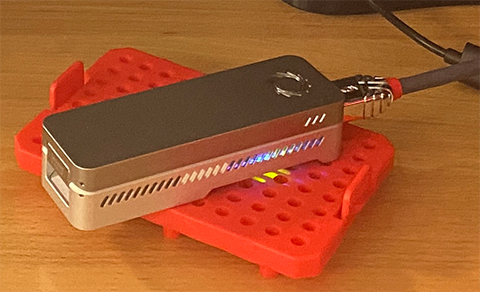
He started reading papers, watching YouTube videos and talking to the people in the lab who were doing sequencing. They pointed him in the right direction. “I found a paper from someone who sequenced an ant genome with nanopore technology for under $1,000,” he said.
Sosa was again impressed by Indeever’s perseverance through difficulties.
“At first when he did the DNA extraction it wasn’t really working,” Sosa said. “But he knew it was possible to do it, so he stuck with it and tried to figure out what he was doing wrong.”
Indeever did figure it out. He successfully extracted and prepped his fish’s DNA and ran it through the sequencer.
In nanopore sequencing, DNA strands are passed one base at a time through pores in a membrane through which an electrical current is passing. A quantifiable change in voltage occurs as each base passes through the pore, and this change is recorded and read out as that particular base. Since the sequencing relies only on the DNA being passed through the pore, it can continue longer than other types of sequencing where the genome must be fragmented first. In theory, nanopore sequencing can read megabases at a time. This makes it a great technique for sequencing a total genome.
After getting all the data, next Indeever had to figure out how to analyze it and turn it into a usable sequence. “I initially wanted to do the bioinformatics part myself, but my computer didn’t have enough memory,” he said.
He ended up using the Galaxy platform’s Flye de novo assembler for single molecule sequencing reads, which uses a publicly available server and an established pipeline.
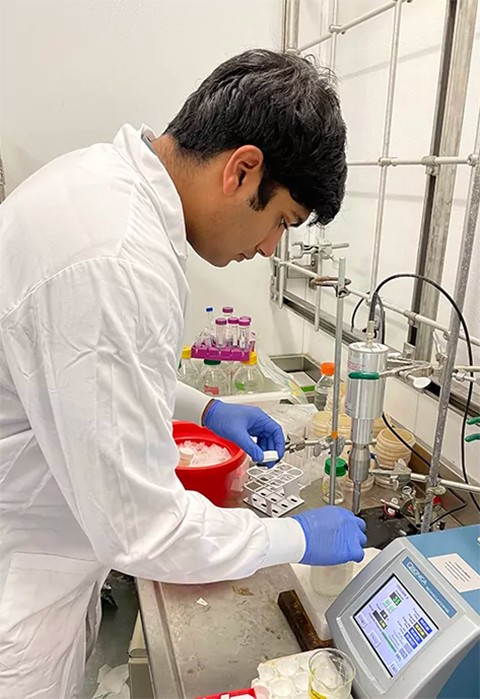
With this first attempt, Indeever assembled 65% of the genome. But he thought he could do better with a second sequencing run, so he set up a crowdfunding page, raised more than $1,000 to buy the necessary reagents and another flow cell for the nanopore, and continued his work. With the second run, he assembled 86.5% of the angelfish genome.
The paper
Indeever wrote up his article and submitted it to peer review at microPublication, an open access journal. He also made all his data accessible online, including any failures he had, so people can learn from his mistakes.
Sosa pointed out that Indeever knew how frustrating it is to look for information behind paywalls and was passionate about making sure that when he published, it was in an open access journal.
Richard Gibbs, director of Baylor College of Medicine’s Human Genome Sequencing Center, read the published article and appreciated the work. “It is very heartening to see this young investigator use these methods for this project,” he said. “This is useful data, and the demonstration that the project can be carried out by an individual working essentially on their own is impressive.”
Gibbs noted that it might be a good idea to check the quality of the sequencing reads, including the coverage (how many times any particular area of the genome was sequenced) and the error rate of the device. But he added that, regardless of those details, “This is impressive.”
Indeever said he’s grateful for the opportunities he’s had so far: having parents who are supportive of his pursuits, going to a school that exposed him to interesting concepts early and living in an area with resources like a community lab.
In addition to sequencing the angelfish genome, his projects include a patent-pending method of creating paper shopping bags out of kelp, a more sustainable resource than trees.
His advice to other aspiring scientists is simple: “Just go do it.”
Enjoy reading ASBMB Today?
Become a member to receive the print edition four times a year and the digital edition monthly.
Learn moreGet the latest from ASBMB Today
Enter your email address, and we’ll send you a weekly email with recent articles, interviews and more.
Latest in People
People highlights or most popular articles

Defining a ‘crucial gatekeeper’ of lipid metabolism
George Carman receives the Herbert Tabor Research Award at the ASBMB Annual Meeting, March 7–10, just outside of Washington, D.C.

Nuñez receives Vallee Scholar Award
He will receive $400,000 to support his research.

Mydy named Purdue assistant professor
Her lab will focus on protein structure and function, enzyme mechanisms and plant natural product biosynthesis, working to characterize and engineer plant natural products for therapeutic and agricultural applications.

In memoriam: Michael J. Chamberlin
He discovered RNA polymerase and was an ASBMB member for nearly 60 years.

Building the blueprint to block HIV
Wesley Sundquist will present his work on the HIV capsid and revolutionary drug, Lenacapavir, at the ASBMB Annual Meeting, March 7–10, in Maryland.

In memoriam: Alan G. Goodridge
He made pioneering discoveries on lipid metabolism and was an ASBMB member since 1971.

